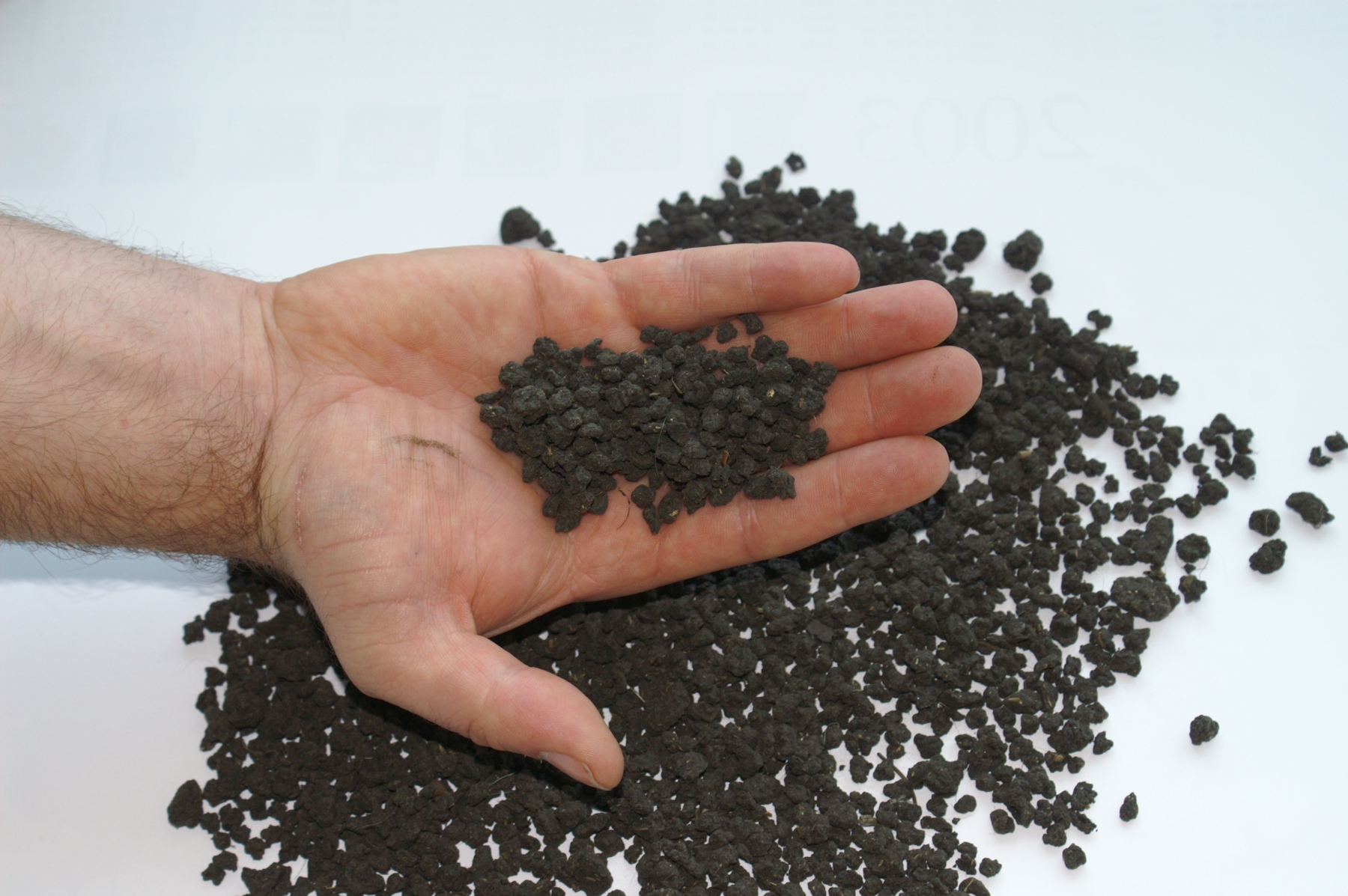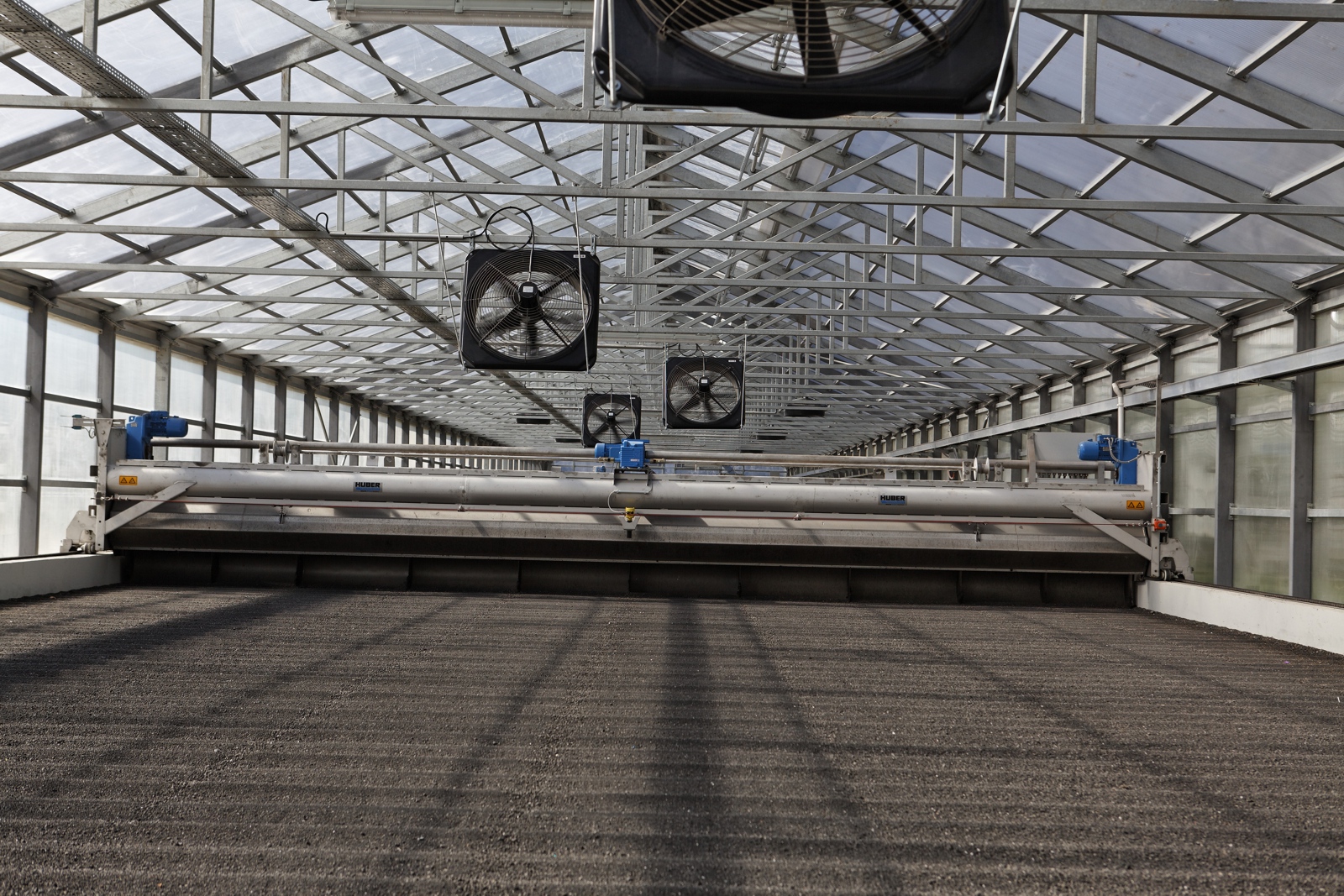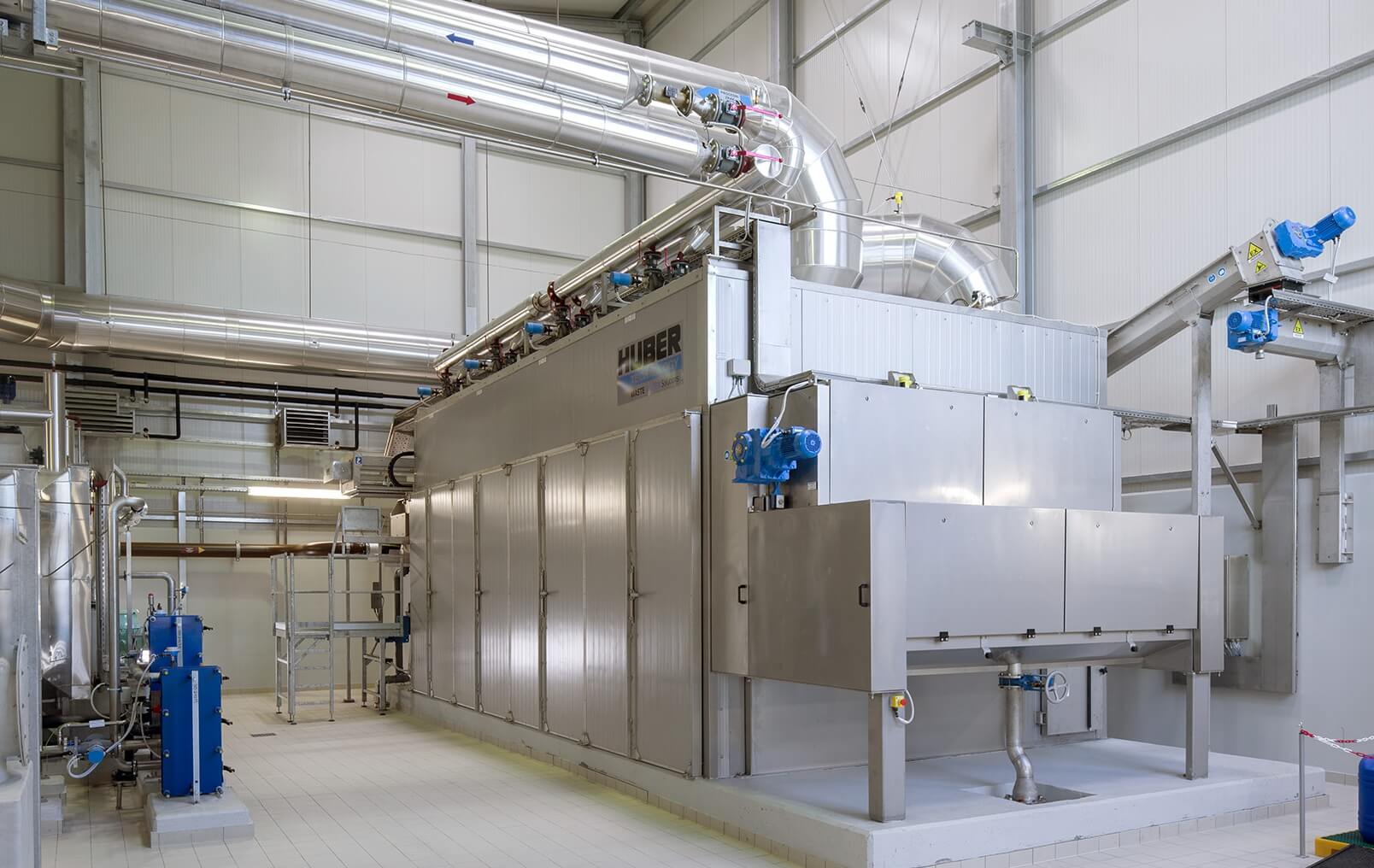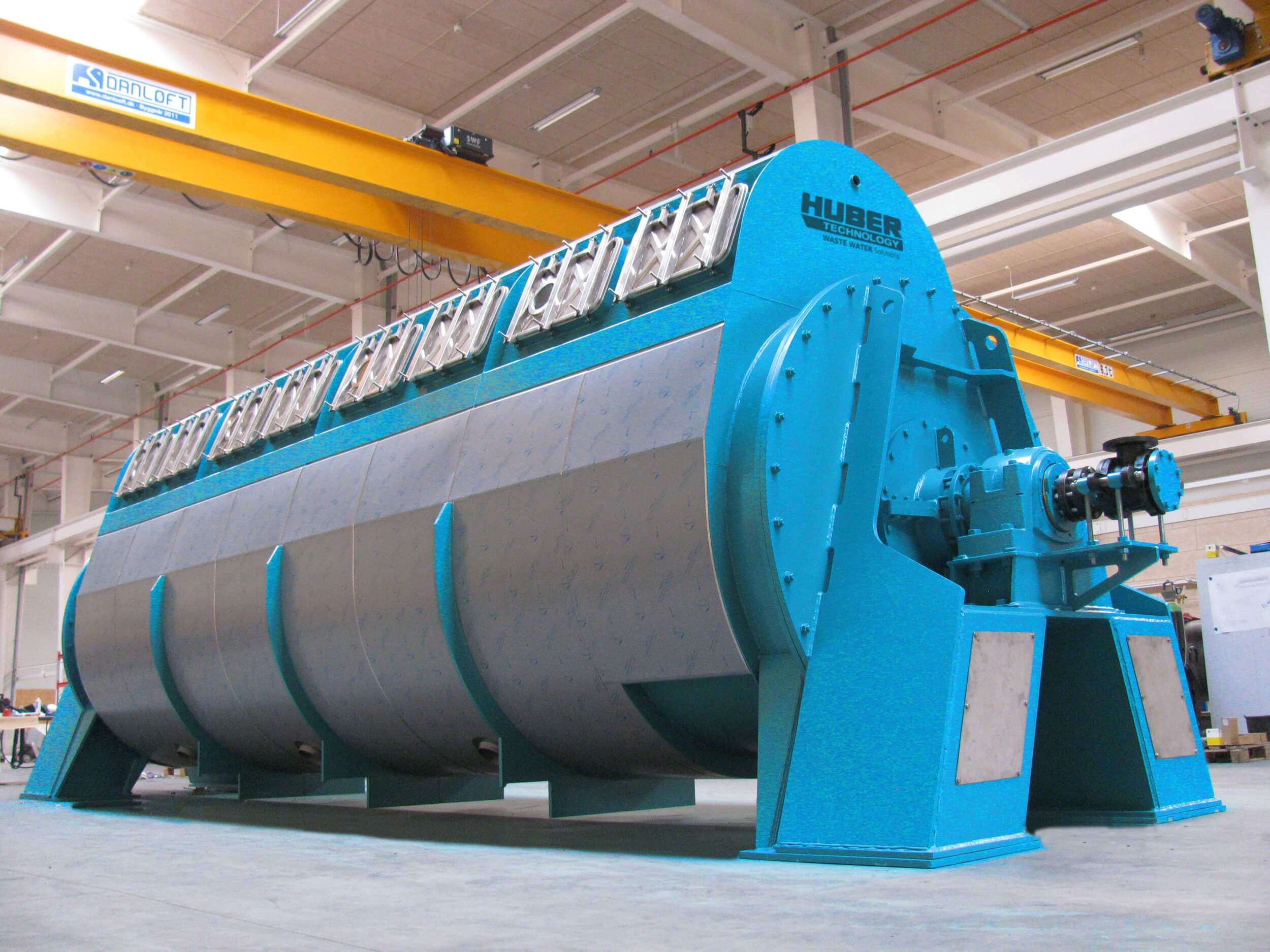The right drying process for every application
We supply three different kinds of HUBER sludge drying systems, which differ greatly in terms of space requirements, temperature level and heating medium.
Solar Sludge Dryers
In a greenhouse where a mechanical sludge turner is installed, the sludge is dried to a solids content of usually 65% DS. HUBER solar dryers are used on small and medium-sized wastewater treatment plants as well as on very large plants.
Medium-Temperature Belt Dryers
The sludge is dried with hot air (70° up to 150° Celsius) in the belt dryer. The dried product has a solids concentration ranging from 70% DS up to 95% DS. HUBER belt dryers are used on medium to very large sewage treatment plants.
Disc Dryers
The disc dryer is a contact dryer designed for the partial drying of dewatered sewage sludge to 40 – 45% DR and is heated with saturated steam up to max. 10 bar(a). HUBER disc dryers are often used in combination with fluidized bed incinerators for medium to large and very large volumes of sewage sludge.




